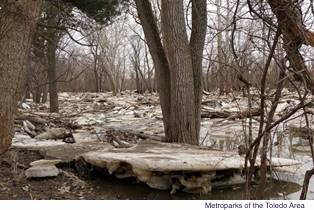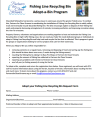
By Ava Slotnick
After our harsh winter, spring came, ice melted and rivers flooded. As the river rose, ice and fast moving water rushed into the floodplains of the Maumee River. It moved signs, crushed picnic benches, knocked over trees, swept away roads and left places like Side Cut Metropark and Buttonwood Park asking for help form volunteers to cleanup the extreme damage. While we are lucky events like this do not happen often, it is important to recognize this is how nature works and it is part of the cycle. While there was plenty of damage, this cycle can be a good thing. Let me explain.
The Maumee River flooded when an ice jam prevented much of the quickly melting ice to move out to the Lake Erie in mid-March. The extra water then rushed over the banks and into the flood plain that was created over hundreds of years with the changing and frequently flooding river. Much of the flooding took place in low laying parks, not residential areas, sparing many homes and roads very costly repairs, for the most part. Yes, the parks received their share of damage, no doubt there. While it may seem like the wildlife will take years to recover from the damage, it might be a good thing in the end.
According to the Intermediate Disturbance Hypothesis, a theory widely used in habitat studies, wildlife will come back in full after destruction like this. The Intermediate Disturbance Hypothesis is highly complex and can be applied to understanding many types of habitat destruction from hurricanes to earthquakes to volcanos and fires. While complicated, it is easy to understand. Simply stated - An ecosystem needs a certain amount of destruction to keep biodiversity high. An ecosystem that gets destroyed too much will be too hard to live in (like Hawaii lava fields) while a place that is stagnate and never changes (like Death Valley, California) tends to get dominated by one or two kids of species. An ecosystem that gets messed up “just enough” with varying levels of destruction (i.e. Amazon Rainforest or wildfires in prairies) allows for a fresh “restart” and sets an even playing field for species. New ground opens up, sunlight goes where it hasn’t before and wildlife takes advantage of the new terrain. Yes, some trees will die but it will make room for new kinds of trees to take root. This process can take 1-20 years (or more) but it is part of a larger cycle.
In light of the recent flooding that has taken place along the banks of the Maumee, the scars will remain for multiple years. We will clean up and repair the immediate damage and as spring approaches, we will see wildflowers, new tree saplings and birds emerging but it could take a season or two or more to see the rejuvenating effects of new growth from the destruction. In 10 years, it is likely that new trees will shape the landscape and possibly more types wild flowers will be seen along the banks. It is all part of nature’s cycle. We just get to stand back, out of the way, enjoy the view and remain in awe of the great power of the Mighty Maumee.












